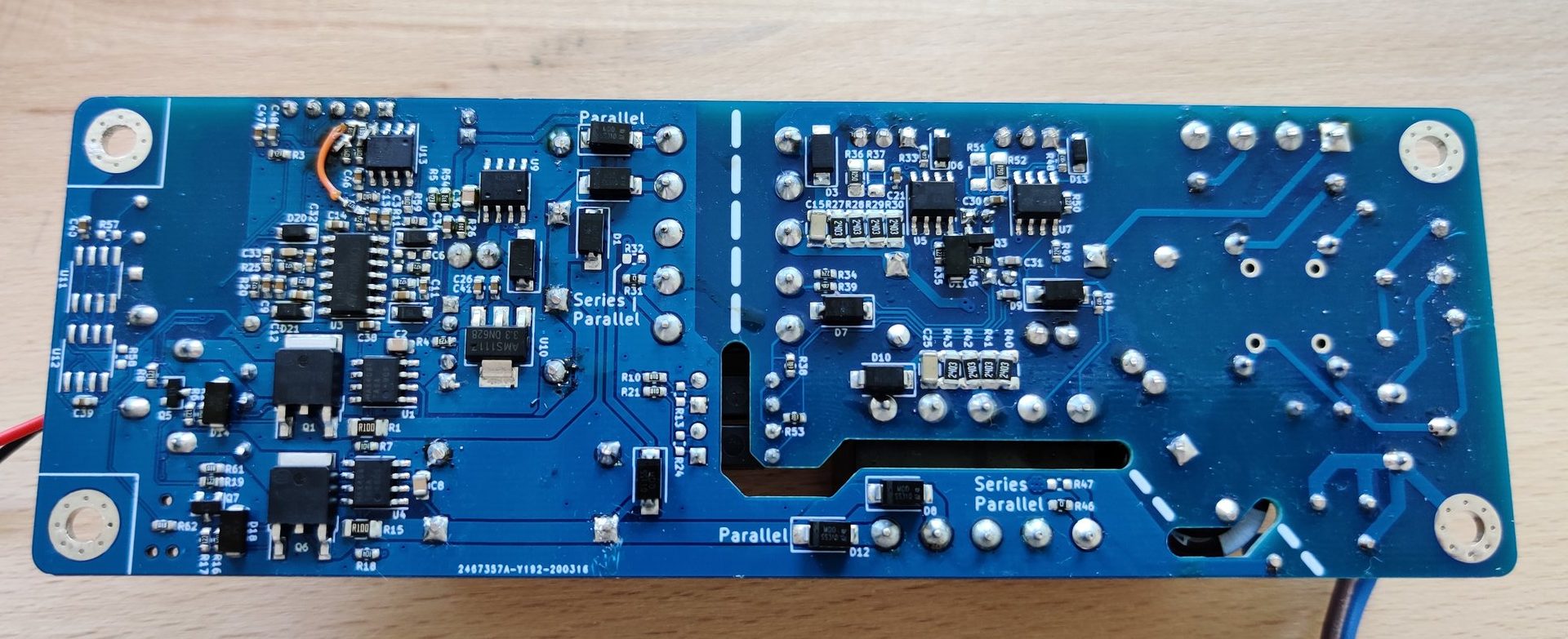Addressable RGB LED strips may be all the rage, but that addressability can come at a cost. If instead of colors you expect to show shades of white you may the find less flickery, wider spectrum light from a string of single color LEDs and a nice supply desirable. Of course there are many ways to drive such a strip but this is Hackaday, not Aliexpressaday (though we may partake in the sweet nectar of e-commerce). [Niklas Fauth] must have really had an itch to scratch, because to get the smoothest fades for his single color LED strips, he built an entire software defined dual 50W switched-mode AC power supply from scratch. He calls it his “first advanced AC design” and we are suitably impressed.
Switched-mode power supplies are an extremely common way of converting arbitrary incoming AC or DC voltage into a DC source. A typical project might use a fully integrated solution in the form of a drop-in module or wall wart, or a slightly less integrated controller IC and passives. But [Niklas] went all the way and designed his from scratch. Providing control he has the ubiquitous ESP-32 to drive the control nodes of the supply and giving the added bonus of wireless connectivity (one’s blinkenlights must always be orchestrated). We can’t help but notice the PCBA also exposes RS485 and CAN transceivers which seem to be unused so far, perhaps for a future expansion into wired control?

The supply itself was designed for ease of replication. [Niklas] has chosen components which are inexpensive and easy to find from the usual overseas sources. He decided the ESP-32’s PWM was too choppy to be useful for this dedicated application, so he used an external IC. But dedicated analog DACs (sold as such) were unnecessarily expensive so he swapped in a dual channel I2S audio DAC for identical performance at a much lower price point. The transformers were chosen to be easily sourced as standard components, and even the footprint of the PCBA was squeezed to fit into the enclosure from another commercial supply, giving the project a very finished look.
To see the supply in action, check out the tweet after the break (and linked at the top). Want to build one? Sources are in [Niklas]’ GitHub.
Another project I wanted to do for some time:
A software-defined AC/DC power supply for LED lighting. Controlled by an ESP32, so can be dimmed via WiFi.Tested up to 2x50W. 35W (15-24V, 0-1.5A) constant current in the video.
Also, this has been my first advenced diy AC design. pic.twitter.com/NBkv56HV6F
— Niklas Fauth 🦦 (@FauthNiklas) April 5, 2020















Ah something neat again from the Otter folks.
I thought we were way past the “software defined everything” hype. It’s not like the ESP32 is driving the MOSFET and receiving feedback. Still a very nice build, though.
It’s not really software defined though… The MCU is just turning the knobs, the PWM is still analog(ish).
True DSP driven PSUs are really difficult to design.
Speaking of MOSFETs, can’t he just use a ready made PSU, then wire industrial SSR in series and PWM control that SSR? Wonder what exactly is the point of making variable voltage PSU just for fading.
“Check out that concern for creepage and clearance!”
What good is this spacing when it bridged by a transformer (PH0270NL) that is not rated as DI or RI, and that tends to start breaking down between 1200V and 1500V on the di-electric withstand test? Used this same model with a Topswitch-based flyback some years ago, but had to use another when the factory hi-pot tests had > 20% failure.
And the PCB is not rated for DSR. So good luck with tracking where worse than PD II.
Assuming he keeps this at home, and is in a proper enclosure, no one cares – just go for it.
Lick at your own risk!
Reminder, or just a note to self?
Am I the only one bothered by the ESD “don’t touch” sign instead of the proper high voltage one?